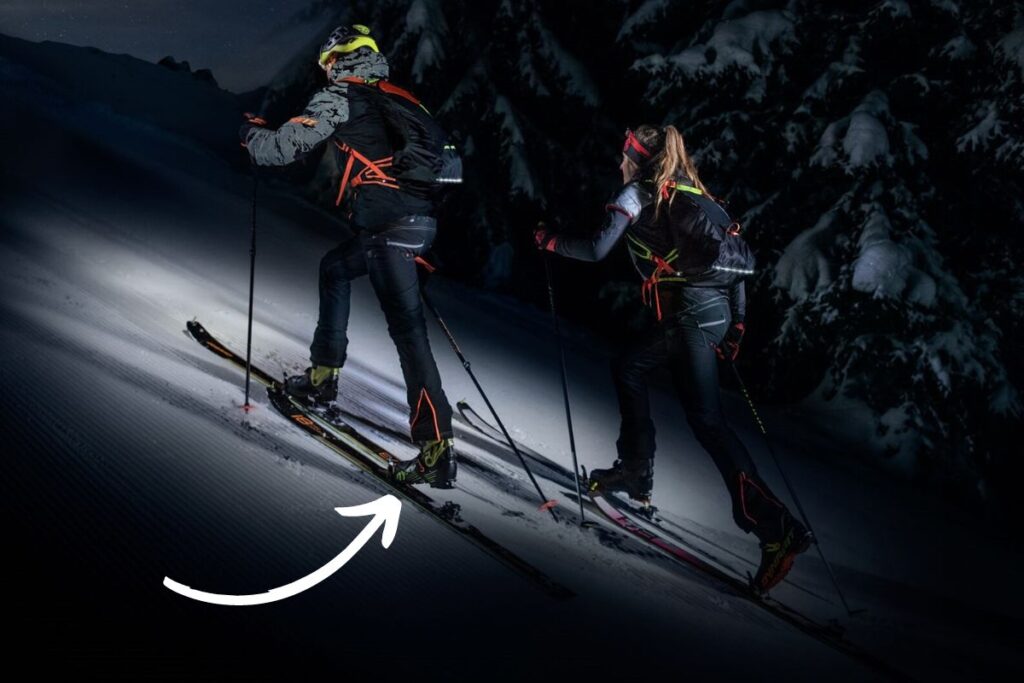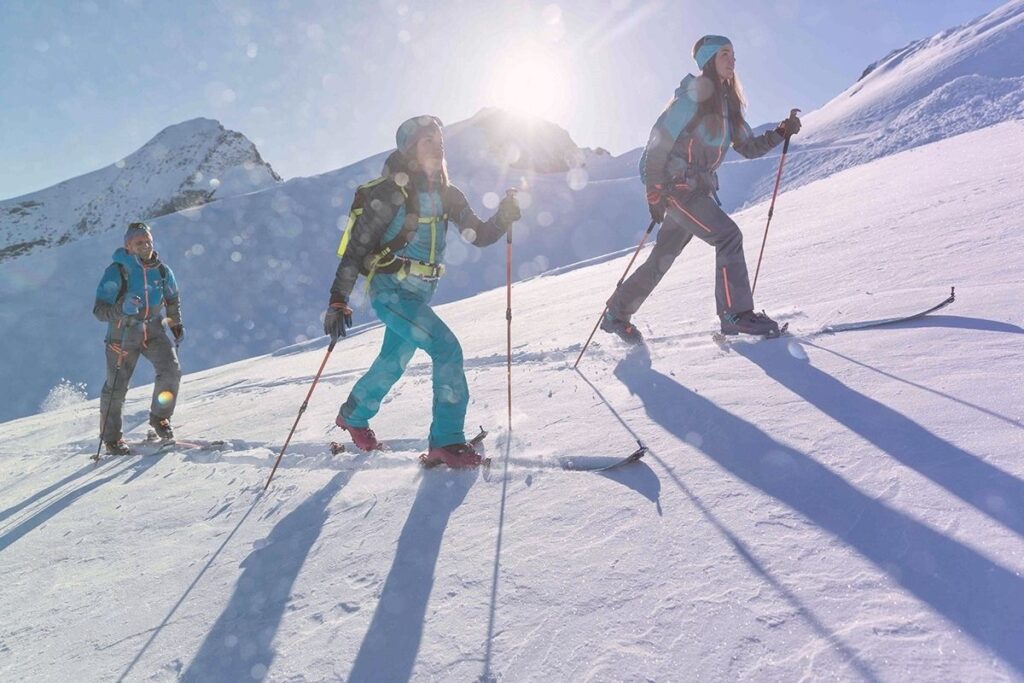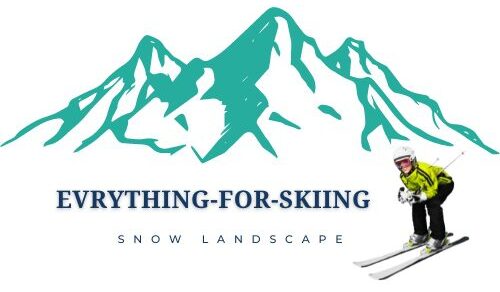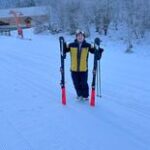If you’ve heard the term’ ski touring‘ and wondered what ski touring is all about, you’re in the right place. I’m Romeo Petrescu, and I’ll guide you through this exciting sport. Ski touring combines the thrill of skiing with the adventure of hiking. Instead of taking lifts, you hike up the mountain with specialized equipment like synthetic skins and touring bindings, offering a unique and fulfilling way to explore the backcountry. Alpine touring, often used interchangeably with ski touring, involves a similar concept but typically includes more technical gear designed for steeper and more challenging terrains. Let’s dive into what ski touring entails, its allure, and why it’s gaining popularity.
What is Ski Touring

Ski touring is an adventurous winter sport that combines skiing and hiking to traverse ungroomed mountain terrain. Instead of relying on ski lifts, participants hike up mountains using specialized equipment. Climbing skins, attached to the base of the skis, provide the necessary grip for uphill travel. Additionally, ski touring bindings are designed to allow the heel to lift during ascents and lockdown for descents. Once the summit is reached, the skins are removed, and the bindings are secured for the downhill ski. This unique activity grants access to remote, untouched snow, offering the dual benefits of a physically rewarding climb and an exhilarating descent through pristine landscapes.
History of Ski Touring
Ski touring has a history spanning thousands of years, with the earliest evidence found in Alta, Norway, where cave paintings date back over 4,000 years. In 1927, Olaf Rye discovered ancient skis in a peat bog in Hoting, Sweden, from 4,500 BCE. These early skis were used for transportation and hunting in snowy regions. The sport began to evolve in the 19th century, with Sondre Norheim, born in 1825 in Norway, known as the “father of modern skiing” for developing bindings that allowed the heel to lift. In 1903, Austrian brothers Fritz and Hans König completed the first recorded ski tour in the Alps, marking the start of organized ski touring.
The 1930s saw innovations like climbing skins made of seal fur by Norwegian skiers, boosting ski touring’s popularity in the European Alps. In 1954, German mountaineer Fritz Stammberger completed a solo ski tour of the Karwendel range, inspiring long-distance ski touring. The Haute Route from Chamonix, France, to Zermatt, Switzerland, established in 1911, became iconic. Today, ski touring is a global phenomenon, thanks to lightweight materials and gear advancements. It remains a beloved winter activity, blending skiing, mountaineering, and adventure, highlighting human ingenuity and the allure of pristine winter landscapes.
The Lure of the Backcountry
Why Choose Ski Touring?
Untouched Beauty: Ski touring lets us explore pristine landscapes far from groomed trails. We get to experience the serenity of gliding through fresh powder and leaving the first trail of the day.
Solitude and Silence: Enjoy an intimate encounter with nature away from the crowds. The rhythmic sound of skis on snow, the chirping of distant birds, and the rustling of trees create a meditative experience.
Physical Challenge: Conquering a mountain using our strength provides immense satisfaction. The physical demands of ski touring are part of its allure, offering a sense of accomplishment with every ascent.
Essential Equipment

- Touring Skis: These skis are lighter than regular alpine skis, making ascents easier. Their design allows for better maneuverability and control.
- Climbing Skins: Climbing skins are attached to the base of skis, providing grip on uphill sections. They are crucial for preventing backsliding during ascents.
- Touring Bindings: These bindings allow the heel to lift for ascending and be locked down for descending. They are essential for both uphill and downhill performance.
- Boots: Touring boots offer flexibility for uphill movement and stiffness for downhill performance. They are designed to provide comfort and support in varying conditions.
Ski Touring Safety
Safety is paramount in ski touring. Never go alone; consistently tour with a group for support and assistance. Carry an avalanche rescue kit, including a transceiver, shovel, and probe, and ensure everyone knows how to use them. Understanding avalanche safety is crucial. We must learn to read snow conditions, recognize avalanche risks, and practice rescue techniques. An avalanche safety course can provide valuable knowledge and skills to keep us safe in the backcountry.
Clothing and Additional Items
Dressing appropriately for ski touring is crucial. Start with a thermal top and leggings to keep warm, and bring spare layers for the descent when temperatures drop. A backpack is essential, and should include:
- Avalanche Rescue Kit: Always carry an avalanche transceiver, shovel, and probe.
- Water and Snacks: Stay hydrated and keep energy levels up with snacks.
- Sunglasses: Protect your eyes from the sun’s glare on the snow.
- Spare Layers: Pack extra clothing to adjust to changing weather conditions.
By dressing smartly and packing the right gear, we ensure a comfortable and safe ski touring adventure, fully prepared for the challenges and joys of the day.
Safety Gear
- Avalanche Transceivers: These devices are essential for locating buried skiers in case of an avalanche. Every ski tourer should carry one and know how to use it.
- Shovels and Probes: These tools are used for rescue operations in avalanche situations. They are critical for digging out buried individuals quickly.
- Knowledge and Training: Understanding the terrain, weather patterns, and avalanche risks is crucial. Many of us take avalanche safety courses to ensure our safety and that of our companions.
Must read our detailed guide on Skiing Safety.
Fitness
We need to be in good physical condition and have solid skiing skills for ski touring. A typical day can involve managing around 1,000 meters of elevation gain, which requires endurance and strength. It’s essential to be comfortable skiing in various snow conditions and capable of handling both the ascent and descent. Regular cardiovascular and strength training can help us prepare for the physical demands of ski touring.
Physical Fitness Requirements
Ski touring demands good physical fitness, focusing on endurance, strength, flexibility, balance, and recovery. A typical day can involve climbing around 1,000 meters. We should do regular cardio exercises like running or cycling to build the necessary stamina. Leg and core strength are crucial for both climbing and skiing downhill. Exercises like squats, lunges, and core workouts are essential.
Flexibility is also essential to navigate different snow conditions. Regular stretching and yoga can help improve flexibility and prevent injuries. Good balance is vital for skiing; balance exercises, like standing on one leg or using a balance board, can enhance stability. After intense training, muscle recovery is necessary to prevent fatigue and injury. Adequate rest and techniques like foam rolling or massage can help.
Training Regimen
Aim for at least 150 minutes of moderate aerobic activity or 75 minutes of vigorous activity each week to prepare for ski touring. Activities like running, swimming, or high-intensity interval training (HIIT) are excellent choices. Strength training should be done at least twice weekly, targeting major muscle groups, especially the legs, core, and back.
Incorporate daily stretching routines, with yoga sessions lasting 20-30 minutes, to enhance flexibility and balance. Balance exercises should be practiced at least three times a week, using tools like balance boards to simulate the dynamic balance needed in skiing. Recovery is also crucial. Implement a structured plan that includes stretching, hydration, proper nutrition, and rest days to help muscles recover and grow.
Tips for Effective Training
Consistency is key. Maintain a regular training schedule to build fitness gradually. A variety of exercises helps avoid boredom and ensures overall fitness. Progression is essential—gradually increase the intensity and duration of workouts to challenge your body continuously. Monitor your progress using fitness apps or journals to stay motivated and adjust your training as needed. Professional guidance can also be valuable. Consider consulting with a fitness trainer to tailor a program specific to ski touring demands.
By focusing on these fitness elements and incorporating a balanced training regimen, we can ensure that we are physically prepared for the rigorous demands of ski touring. Emphasizing endurance, strength, flexibility, balance, and recovery will help us handle the diverse challenges of this activity. Consistent and varied training and professional guidance will optimize our physical readiness and overall skiing experience.
| Fitness Component | Recommended Activities | Frequency | Benefits |
|---|---|---|---|
| Endurance | Running, Cycling, HIIT | 150 minutes/week (moderate) or 75 minutes/week (vigorous) | Builds stamina for long climbs |
| Strength | Squats, Lunges, Planks | 2 times/week | Enhances leg and core strength |
| Flexibility | Stretching, Yoga | Daily | Improves movement and reduces injury risk |
| Balance | Balance Board Exercises | 3 times/week | Increases stability on skis |
| Recovery | Rest, Hydration, Foam Rolling | As needed | Prevents fatigue and aids muscle repair |
The Experience
A typical ski touring day starts early. We drive to the snow line, park, and gear up. We begin our ascent by putting on our touring skis and attaching the climbing skins. The climb is slow and rhythmic, with each step taking us deeper into the serene winter landscape. We might stop to adjust our gear or take in the breathtaking scenery around us along the way.
Reaching the summit is a moment of triumph. We pause to enjoy the panoramic views and catch our breath. After a brief rest, we remove the skins from our skis and lock our bindings for the descent. The downhill ride is exhilarating, especially when we find untouched powder snow. We glide through the fresh snow, feeling the thrill of speed and the joy of carving our path. Each turn brings a new rush of excitement, making all the effort of the climb worthwhile.
Ski Touring vs. Ski Mountaineering
Ski touring and ski mountaineering differ significantly regarding technical requirements and objectives. We hike up and down in ski touring without using ropes or other mountaineering gear. The focus is enjoying the ascent and descent on skis, often exploring less-traveled areas.
In contrast, ski mountaineering combines elements of both skiing and winter mountaineering. It requires a broader skill set, including knowledge of rope techniques, ice climbing, and navigating glaciers. Ski mountaineers often tackle more challenging terrain, such as steep couloirs and icy faces, where ropes, harnesses, and crampons are essential. This combination of skiing and mountaineering opens access to more remote and technical routes and demands significant experience and preparation.
Ski Touring vs. Cross-Country Skiing
Ski touring and cross-country skiing are distinct activities with different techniques and terrain. In ski touring, we use climbing skins attached to the base of our skis to hike uphill. The skins provide grip, allowing us to ascend slopes too steep for regular skis. Once we reach the top, we remove the skins and ski down, often through untouched powder.
Cross-country skiing, on the other hand, involves gliding over relatively flat or gently rolling terrain. It doesn’t typically include steep uphill or downhill sections. Cross-country skis are narrower and lighter, designed for speed and efficiency on groomed tracks or smooth trails. The primary goal is endurance and covering distance rather than tackling challenging descents or ascents.
While both sports offer excellent cardiovascular workouts and a connection to nature, ski touring provides the added thrill of climbing and descending varied terrain. Cross-country skiing focuses more on continuous, rhythmic movement across flatter landscapes. Both activities have unique appeals, catering to different preferences and skill levels.
What to Expect on a Ski Touring Day
When planning a ski touring day, we must consider several factors for a safe and enjoyable experience. Check the weather forecast, wind conditions, snow levels, and potential exposure to the elements. Aiming for a summit and starting early in the day is essential to minimize avalanche risks and ensure plenty of daylight for the tour.
Our day begins with gearing up at the snow line. We attach climbing skins to our skis and start the steady ascent. The climb is rhythmic and serene, offering breathtaking views along the way. Upon reaching the summit, we take a moment to enjoy the panorama and catch our breath. Then, we remove the skins from our skis, lock our bindings, and prepare for the descent. Skiing down is exhilarating, especially when we find untouched powder. The descent is faster and filled with the thrill of carving through fresh snow, making the climb worth every step.
Conclusion
Understanding ski touring provides insight into an adventurous sport that offers physical challenges and serene encounters with nature. From its historical roots to the necessary equipment and safety protocols, ski touring is a comprehensive winter activity. Whether you’re drawn by the allure of untouched landscapes or the physical demands of mountain ascents, ski touring has something for everyone. Embrace the adventure and experience the pristine beauty of the backcountry.
Remember!
“Skiing is a dance, and the mountain always leads.”

